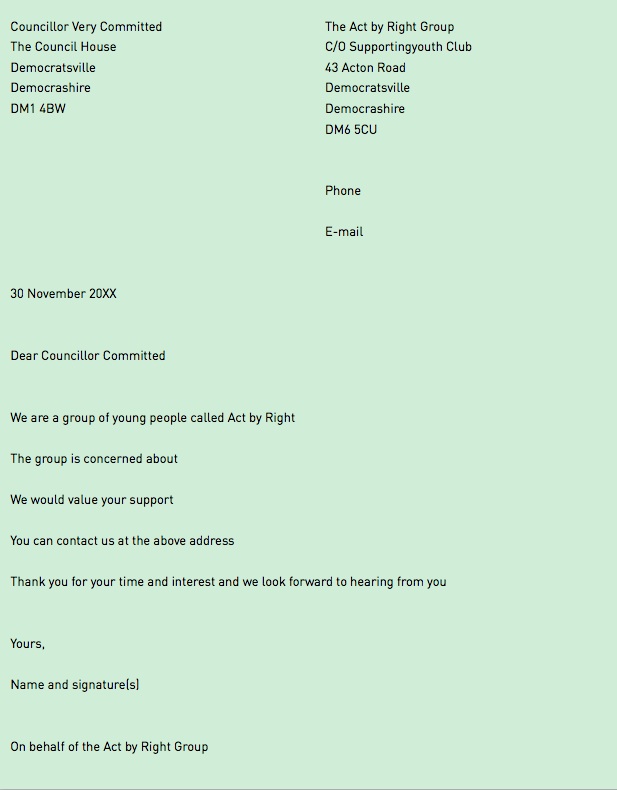4.1(b) Read all about it
Aim
To write a general information leaflet and newsletter supporting the cause.
You need
At least an hour, pens, post-its and some examples of leaflets and newsletters. Access to a computer and digital camera would also be useful.
What to do
To back up a poster campaign, it’s a good idea to have further information to pass on to people. You don’t want this to be too long, or else you might put them off: ideally two sides of A4, or at the most four sides of A4, which can be photocopied on a sheet of A3. That’s not a lot, especially if you add in a photograph and a copy of your poster.
a) As a whole group, have a look at a few examples of some leaflets and newsletters and discuss what you think works and what doesn’t. Jot down a rough guide.
b) Write on post-its the key points you’d like to get across and stick them on a wall or flipchart. Remember this is about campaigning for change. To decide how important each idea is to the campaign, sort them into three columns: a) Essential b) Important c) Desirable. If you can’t agree on each point, have a vote.
c) Having got broad agreement, divide into two groups, one working on the leaflet and the other on the newsletter. Using the outline below, divide what you want to say into bite-size chunks, concentrating first on your essential points, then moving to the important and desirable ones as you need. Build in space for any photographs of the group or to illustrate your message. Agree who is going to draft which sections and get into your groups to do your bit.
Front page
- Banner headline, logo
- Large headline with picture or the poster and caption
- Main message (c200 words)
- Who we are
- What we are campaigning for
- What support we are looking for
- Where to find out more
- Snippet of news or information if space
- Joke, quiz, trivia if space
Back page
- Further article on the campaign (max 300 words)
- Background detail
- Interview with supporters
- What the Council says
- Picture
- Who we are (150 words)
- Our aims are
- What we have achieved
- What we hope to achieve
- Who’s in the group
- Picture
- Contact details
- Supporters, sources of funding . . .
What do you think?
Have a look over your draft. Make sure all the points are relevant and concise. Does it have a human feel and warmth? Read it aloud, as if you were a councillor, an elder, or another young person. This might show up some flaws that you can easily put right. But keep it simple and don’t get bogged down in detail.
What next?
Have what you have done typed on a computer. It can be used in a range of other ways, including for short articles to the local newspaper or as a letter to, for example, local councillors or businesses. Before you move on, get into small groups, agree who you might need to write to and draft some letters based on the information you have already created. Remember the tips and hints in the outline given below.
A letter-writing guide
- The correct details of the person you are writing to
- Date
- Your contact details
- Keep it short (no more than a side of A4; you can always add in your newsletter, leaflet or poster for more information)
- Who you are
- What you are doing
- What support or help you are asking for
- Where you can be contacted
- By when you would hope to hear from them
- Sign it
